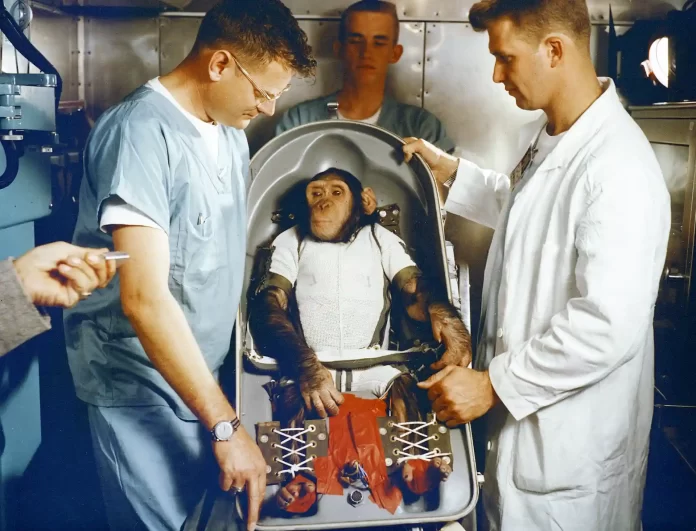Project Mercury : Animals in Space – Scientific Research on Space Technology
In October 1958, less than two months after the administration was officially formed, NASA initiated Project Mercury. The project had 3 clear yet very challenging objectives. The first was to orbit a manned spacecraft around the Earth. The second was to investigate man’s ability to function in space. And the third objective was to recover both man and spacecraft safely.
While NASA aimed to work quickly and beat the Soviets, they made sure that strict safety measures were always enforced. For example, the Mercury spacecraft had a launch escape system, in case of a launch failure to separate the capsule safely from its booster. The spacecraft also had, besides its main parachute, a reserve for landing. After all, having something go wrong and an astronaut lose his life would have been disastrous to the campaign and could bring the ethics of NASA’s mission into question.
Testing to send Humans in Space
Before NASA could send men to space, they first had to test their spacecraft without any humans on board. Multiple different designs were tested with various objectives in mind. To reduce cost, NASA used a small 15-meter-tall rocket, named the Little Joe. The main objective of the first Little Joe rocket was to test the launch escape system. The first Little Joe was launched in August 1959 and it was a complete failure. Half an hour before the rocket should have been launched, the capsule unexpectedly launched while it wasn’t even attached to the booster. 7 more launches of Little Joe would be tested as part of Project Mercury, with different mission objectives and varying degrees of success.
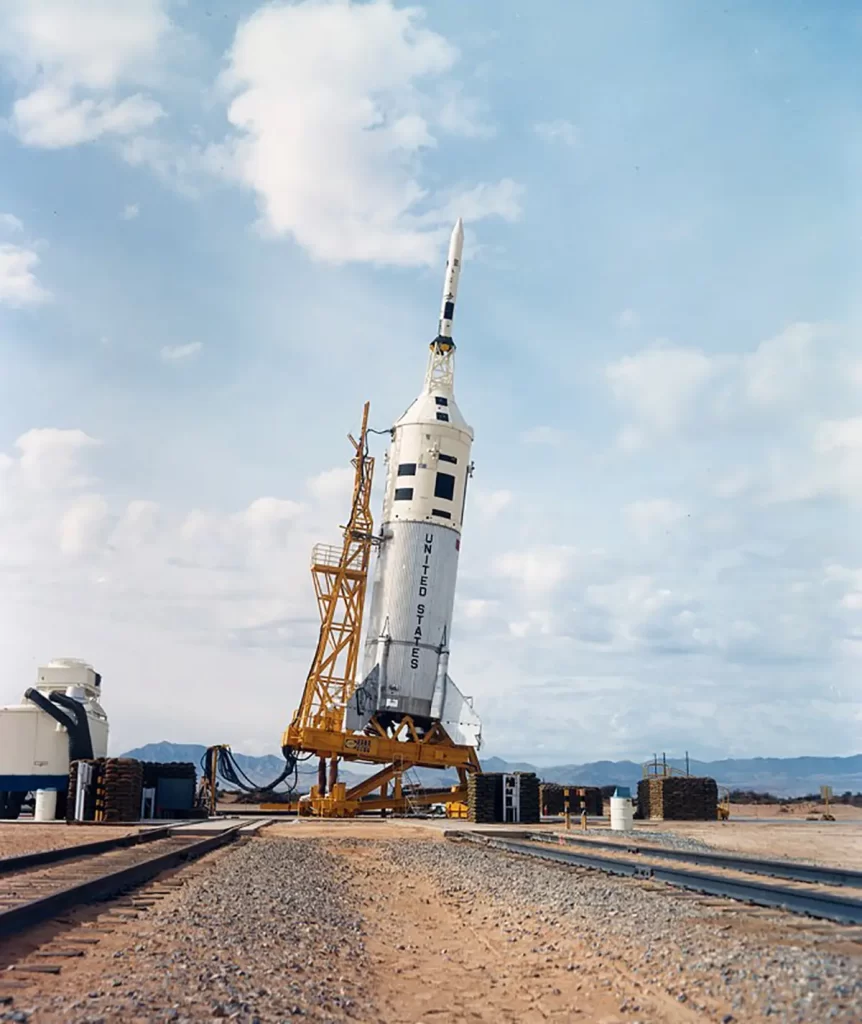
NASA also did a test with the Big Joe 1 in September 1959. It fared much better than its little brother, reaching an altitude of 87 miles or 140 kilometres, before being recovered. The spacecraft test was successful, but the launch vehicle wasn’t since it failed to separate two outboard engines. As of 1960, NASA also did various, more comprehensive tests with the Mercury-Redstone and the Mercury-Atlas.
Both rockets are significantly larger than the Little Joe rocket. The Mercury-Redstone was 25.4 meters tall and the Mercury-Atlas 28.7 meters. The costs were also much higher. The Little Joe cost about 200,000 dollars per launch, the Mercury-Redstone about 1 million and the Mercury-Atlas even 2.5 million dollars per launch! After refining their capsule and rocket systems, the next step for the United States, as well as the Soviets, was to do tests with animals.
Dogs Astronaut in Space : Strelka and Belka
A few years later the Soviet Union sent two more dogs into orbit. Their names were Strelka and Belka. In August 1960, the dogs were launched with a 31 meter tall rocket. It produced a thrust of 912 kilonewtons at lift-off. This time however, the dogs shared a much happier fate than Laika did. Strelka and Belka were joined by a rabbit, 42 mice, two rats, flies, and several plants and fungi. Collectively, these creatures were the first to go into orbit and return alive!
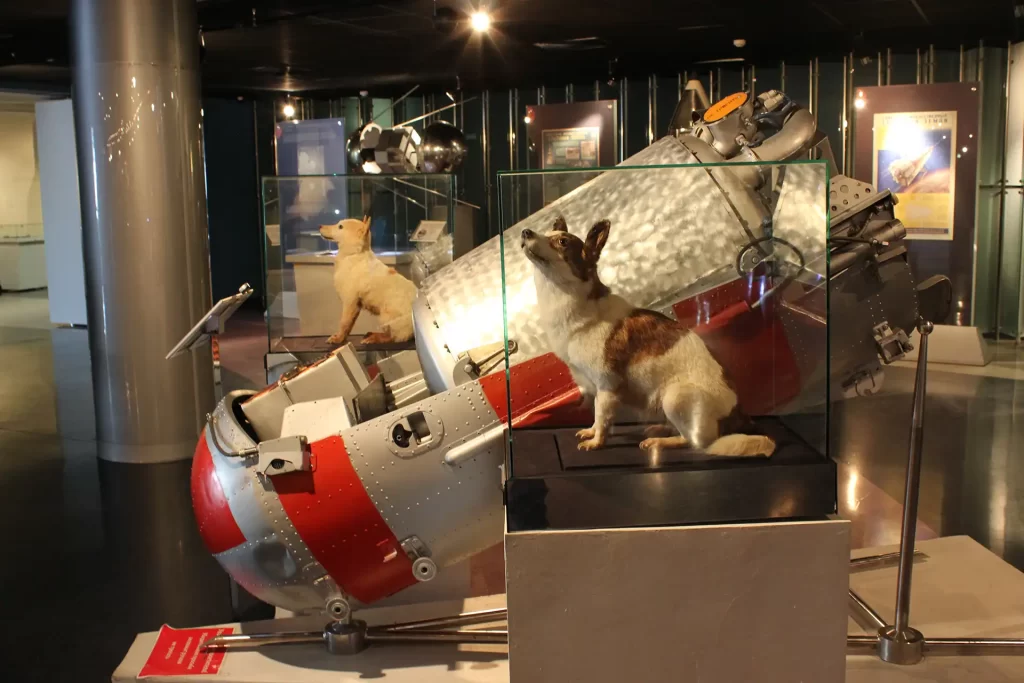
First chimpanzee in Space : Ham
NASA also began sending animals out into the atmosphere. Ham the chimpanzee had been in training since July 1959, and had been taught to respond to flashing blue lights by pulling a lever. If the lever was not pulled, Ham would receive a light electric shock to his feet. However, a correct response earned him a delicious banana! Ham’s reaction would later be tested mid-flight to gauge reaction times in space. On January 31, 1961, Ham was launched on the Mercury-Redstone 2. The rocket produced a total thrust of 350 kilonewtons at lift-off. At just 2 minutes and 18 seconds into the flight, the cabin pressure dropped immensely. Luckily Ham was wearing a spacesuit and did not suffer from the loss in cabin pressure.
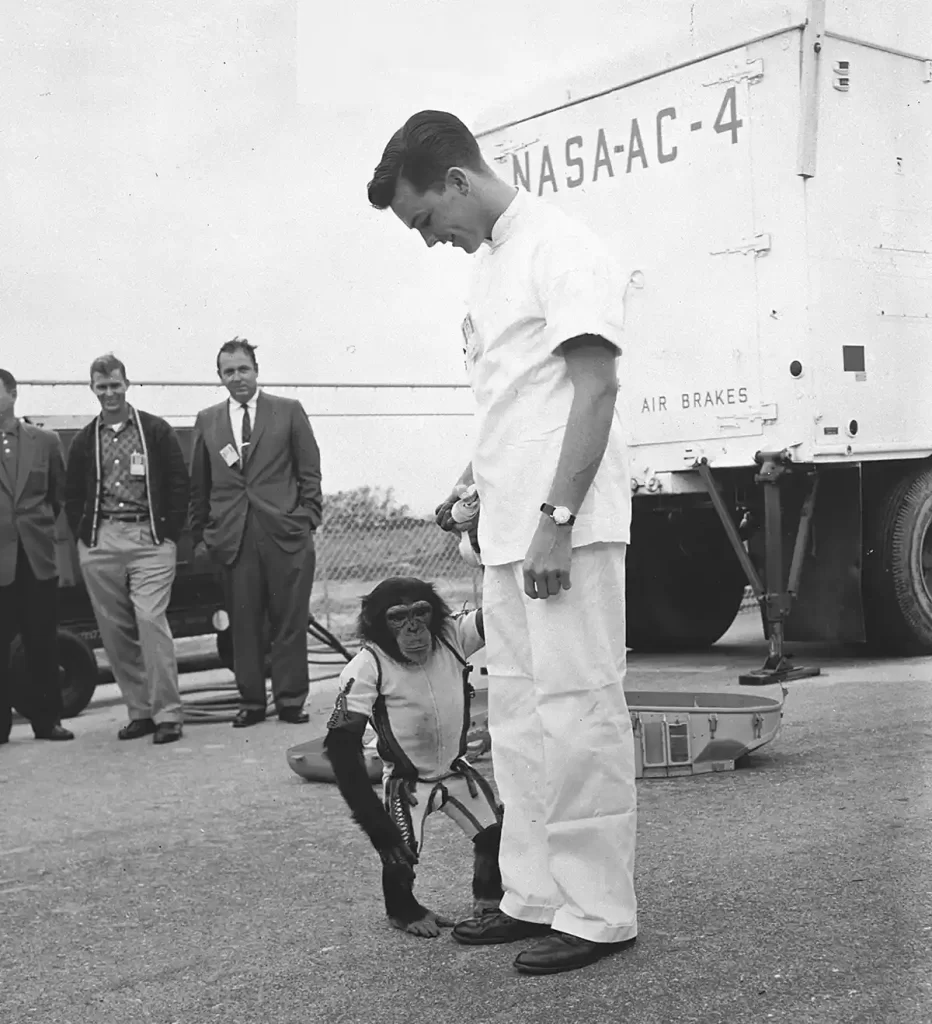
While out in space, Ham performed his task well, pushing levers about 50 times during the flight. This proved that tasks could be performed well in space, which was key in moving towards human space travel. Ham returned back to Earth safely.
In November 1961, NASA did another test flight with the Mercury-Atlas 5. It produced 363 kilonewtons at lift-off. The rocket launched another chimpanzee, named Enos, into space. While Ham’s flight lasted only 16 minutes, Enos’ flight lasted 3 hours and 20 minutes. Enos also safely returned to Earth. His capsule did not land where NASA anticipated, that’s why he was stuck in his capsule for more than 3 hours.
In total, NASA did 20 unmanned missions for Project Mercury between 1959 and 1961. 10 missions were a success, 4 were partial successes, and 6 missions failed. The time had finally come to send the first American to space. After a very strict selection, 7 men were chosen to go to space. To represent these 7 men, the number 7 would be used in all of Project Mercury’s space flights, with the first being the Freedom 7.
The Mercury-Redstone, the same rocket that was used to launch Ham the Chimpanzee, was used to launch Alan Shepard. The Freedom 7 was launched on May 5th, 1961. With a maximum speed of 5,100 mph or 8,200 kph, Shepard rose to an altitude of 116 miles or 187 kilometres. Alan Shepard became the first American astronaut, but was only in space for a brief moment, since the sub-orbital flight only lasted 15 minutes and 28 seconds. After which the Freedom 7 landed in the sea, 300 miles away from the launch pad. Shepard was in good health and the mission was deemed a great success.
Shepard’s flight may have been a monumental leap forward for American space flight, but for NASA and the United States, the achievement was bittersweet. The reason for this? The Soviet Union. Once again, the Soviets had managed to achieve victory first, by sending cosmonaut Yuri Gagarin into orbit onboard Vostok 1, just 25 days before the Americans did.
On April 12th, 1961, Yuri Gagarin was launched with a 38-meter-tall rocket. The rocket produced a thrust of 971 kilonewtons. Yuri Gagarin set the record for being the first human in space. He was also much longer in space than Alan Shepard. Alan’s flight only lasted 15 minutes, while Yuri’s orbital spaceflight lasted for 1 hour and 48 minutes. It took NASA a few more months before they managed to do a full orbital spaceflight.
The First astronaut
In February 1962, John Glenn was the first American astronaut to orbit around Earth. After the first orbital spaceflight, NASA accomplished all 3 main goals for Project Mercury. The first human spaceflight program of the United States continued until 1963. Although some flights were cancelled, all of the six crewed Mercury flights were successful. In total, the project resulted in 53 hours, 55 minutes, and 27 seconds of manned space flights.
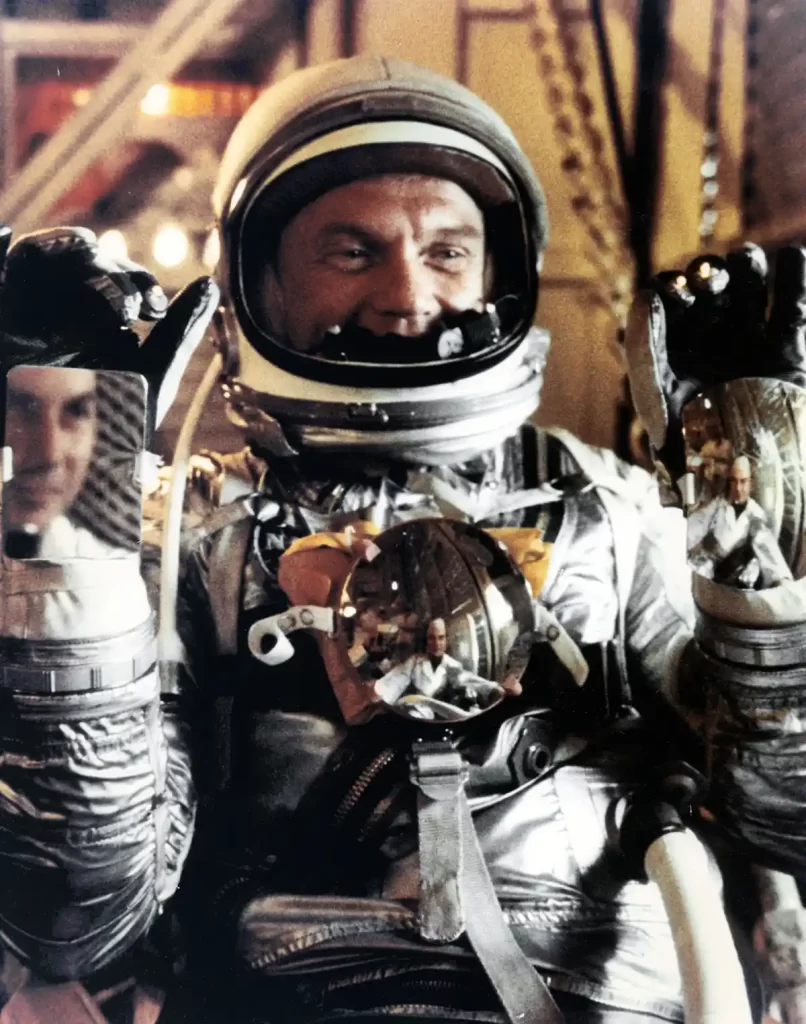
Over the course of 5 years, NASA estimated that the total costs of Project Mercury were 135.3 million for the spacecraft, 82.9 million for the launch vehicles, 49.3 million for operations, 71.9 million for tracking operations and equipment, and 53.2 million for facilities. In total, the cost for Project Mercury was 392.6 million dollars. This would be equivalent to about 3.3 billion today.
Having been beaten to the punch by the Soviet Union for a second time, the United States knew that they had to step up their game. That’s why in 1962, John F. Kennedy gave a historical speech and confirmed NASA’s newest project.
John F. Kennedy said “We choose to go to the Moon in this decade and do the other things, not because they are easy, but because they are hard; because that goal will serve to organize and measure the best of our energies and skills, because that challenge is one that we are willing to accept, one we are unwilling to postpone, and one we intend to win, and the others too. This sent a very clear message to the Soviets. The race to put man on the moon had officially begun!”

